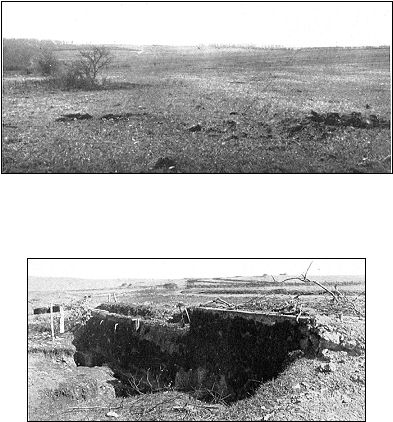
Company D for the raid, was wounded and captured. Lieutenant T. J. Devine, Captain Danenhour’s
adjutant, received a fractured shoulder from machine gun fire.
In the 360th Infantry, Lieutenant Raymond C. Campbell, Company F, was very severely
wounded and captured. He died of wounds in a German hospital, according to reports.
Lieutenant E. R. Warren, commanding a platoon of Company C, 315th Engineers, attached for
the operation, and ten of his men were wounded.
Such was our part in the initial phase of the Meuse-Argonne offensive. The mission was to make
a demonstration which would lead the enemy to believe that an attack was impending, thus causing him
to hold reserves which he could not spare from the real point of attack. The Division succeeded in this
mission.
The Germans retaliated by heavy shelling, particularly with gas, the afternoon and night after the
raid. There were many casualties in the outpost position of the 357th Infantry. The next day there was a
mustard gas concentration on the line of resistance of the 359th Infantry, Company B, 345th Machine
Gun Battalion, suffering very heavily. The positions became so bad that it was necessary to move out of
them into new ones. Owing to the persistency of this type of gas, it was never possible to occupy the
gas-saturated trenches during the time that the Division remained in the Puvenelle sector.
View of Bois des Rappes (on the left) and camouflaged road (on the right),
being a portion of the ground over which the raid of September 26 took Place.
One of the concrete machine gun emplacements which were a part of the defenses of the Hindenburg line
west of Preny. Similar emplacements were constructed at intervals of about 100 meters along the
Tranchee des Grognons behind the camouflaged road running west from Preny.